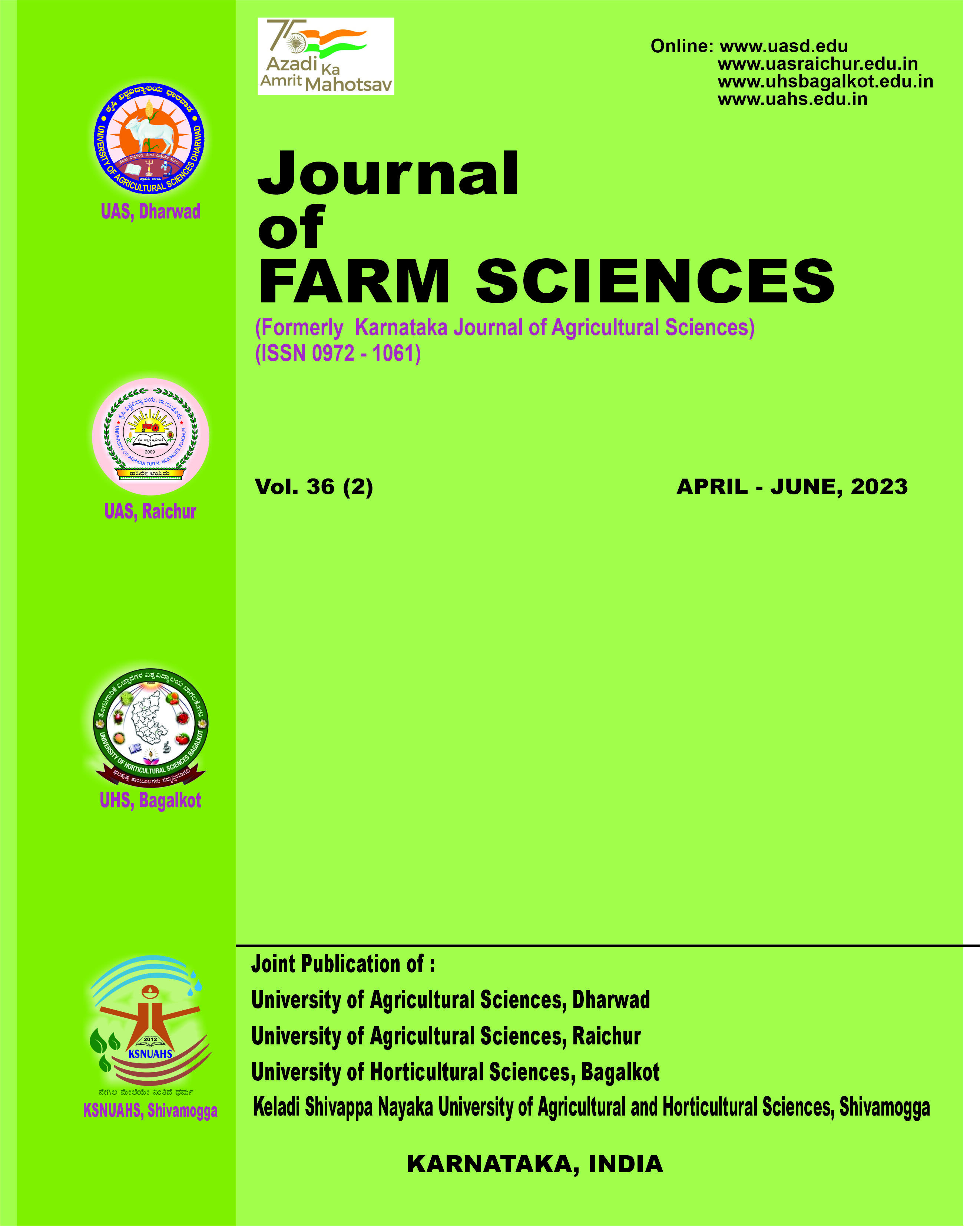In vitro evaluation of bioefficacy of novel fungal endophytes against Rhizoctonia bataticola (Taub).Butler causing dry root rot of chickpea
Keywords:
Dry root rot, Endophytes, Inhibition, Rhizoctonia bataticola
Abstract
Dry root rot is an emerging disease posing threat to chickpea cultivation around the world. It is caused by the soilborne pathogen Rhizoctonia bataticola. The current study was conducted to investigate the potential of employing endophyticmicroorganisms that are antagonistic to R. bataticola to manage dry root rot. A total of 18 fungal endophytes were isolatedfrom healthy chickpea plant (stem and root). The isolated fungal endophytes were evaluated against R. bataticola by dualculture technique under In vitro conditions. Isolate IFRE 2 (Trichoderma yunnanense) exhibited the maximum inhibition ofpathogen growth, followed by BFRE 3 (Trichoderma simmonsii) and IFSE 2 (Trichoderma rifaii). The least mycelialinhibition was observed in BFRE 2 followed by IFSE 4. The effective endophytes were further evaluated for theirbioefficacy against dry root rot under glasshouse conditions as a component of integrated disease management
Published
2023-03-20
How to Cite
REKHA, Y., KULKARNI, V., RAO, M., & PATIL, B. (2023). In vitro evaluation of bioefficacy of novel fungal endophytes against Rhizoctonia bataticola (Taub).Butler causing dry root rot of chickpea. Journal of Farm Sciences, 36(01), 67-70. https://doi.org/10.61475/jfm.v36i01.343
Section
Research Article
Copyright (c) 2023 Journal of Farm Sciences

This work is licensed under a Creative Commons Attribution-NonCommercial-NoDerivatives 4.0 International License.


